
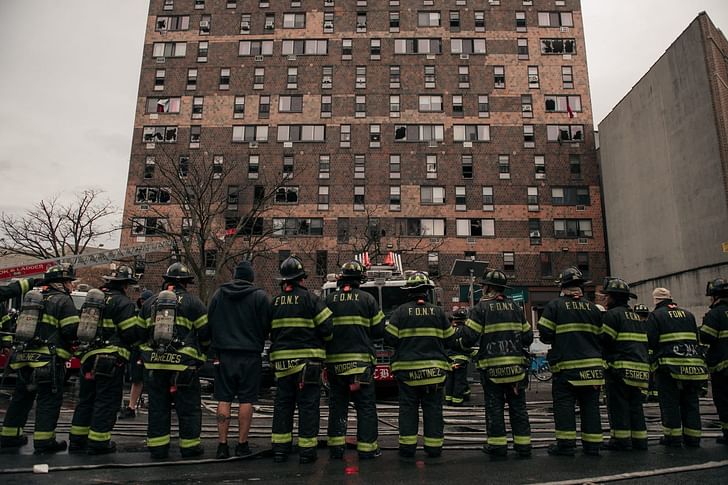
In early 2022, building fires at publicly-funded properties in the Bronx and Philadelphia claimed 29 lives. The facts and conditions surrounding the fires expose an ongoing failure by officials to provide and maintain a safe standard of housing for some of America's most vulnerable. However, the reactions by the same officials would suggest that a moment requiring urgent reforms in regulations, funding, and oversight is instead being met with indifference.
On January 13, 2022, 17 people including eight children were killed and over 60 injured when a fire erupted at the Twin Parks North West apartment building in the Bronx, New York City. According to fire officials, the blaze was sparked by a malfunctioning electric space heater in a third-floor duplex unit, resulting in a flood of smoke through the 19-story building. As a result, all 17 victims died of smoke inhalation. Meanwhile, 120 families were displaced by the fire, approximately 90 of whom receive Section 8 vouchers; a federal program that subsidizes housing for very low-income families, the elderly, and the disabled.
In the days following the fire, a more detailed narrative emerged of the conditions which allowed the incident to claim so many lives. Fire officials noted that both the door to the subject apartment and the door from the stairwell to the 15th floor stayed open during the fire, despite such doors being designed to close automatically to prevent the spread of smoke. City officials would later confirm that, in recent years, the safety doors were repeatedly flagged by inspectors for failing to close properly.
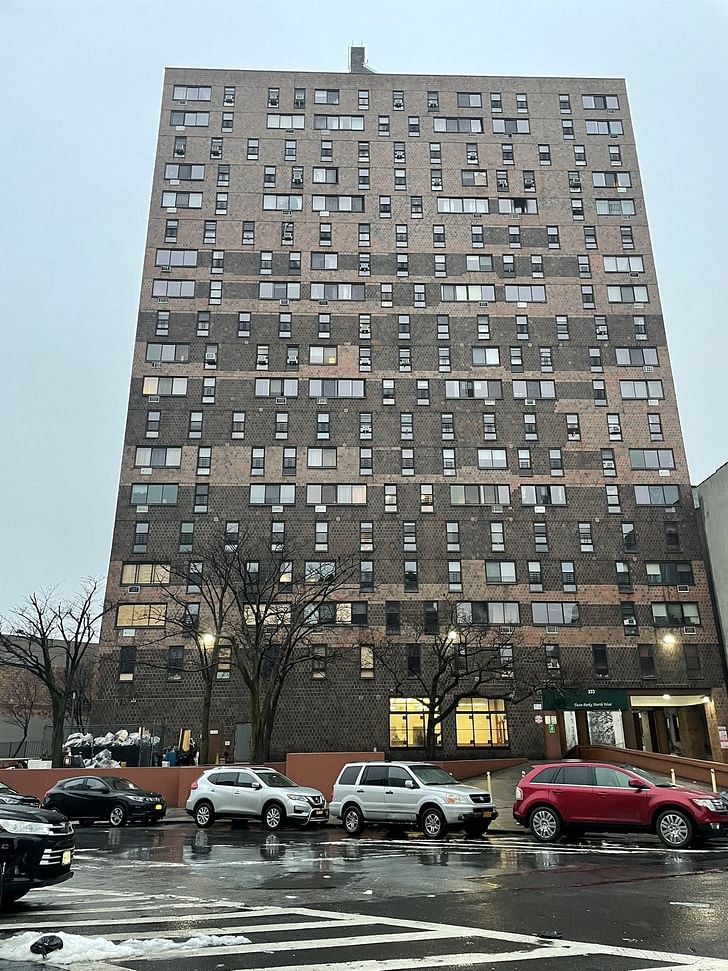
Meanwhile, a subsequent $2 billion class-action lawsuit filed by tenants and relatives of the victims against the current and previous building owners exposed further irregularities. The lawsuit alleges that the building owners failed to ensure smoke detectors were working, failed to provide adequate heat, and failed to provide an intercom and sprinkler system for the building. The question of whether the building provided adequate heat for residents was compounded by a finding by fire officials that the space heater which sparked the fire was one of several which had been running for days inside the apartment where the fire started.
"There are underlying issues that we are facing every day with fire alarms and sprinkler systems and exits, and heat and hot water, and basic necessities that every resident and tenant of New York City should be afforded," said Bronx Borough president Vanessa Gibson in the aftermath of the fire.
Twin Parks becomes the latest example of fatal fires in America’s low-income, subsidized housing. Regrettably, it is far from an isolated incident.
The narrative emerging about life in Twin Parks North West is far removed from original intentions. When the Twin Parks complex was opened in 1974, it was hailed as a role model for affordable housing. Architects involved in the scheme’s design included Skidmore Owings & Merrill and the now-disgraced Richard Meier, who himself lived in one of the apartments for two weeks in 1972. “Apartments, facades, and public spaces were built according to surveys of resident preferences,” writes Henry Grabar for Slate. “The buildings included three day care centers and three schools, family-size two-story apartments, programs like a tenant orientation course, and countless touches of thoughtful design.”
Fifty years later, Twin Parks becomes the latest example of a fatal fire in America’s low-income, subsidized housing. Regrettably, it is far from an isolated incident. Four days before the blaze in the Bronx, on January 5th, 2022, a fire broke out in a rowhouse in Fairmount, Philadelphia, owned and managed by the federally funded Philadelphia Housing Authority (PHA). 12 members of a single family were killed in the blaze, including nine children.

The fire is believed to have started on the second floor of the three-story building when a five-year-old boy, who survived the fire, accidentally set a Christmas tree alight while playing with a lighter. Similar to the events at Twin Parks, the aftermath of the fire in Fairmount revealed troubling details on conditions within the home. The four-bedroom, two-story duplex was home to 14 people, with a total of 26 people occupying the overall 2,300-square-foot building which contains the apartment. According, to PHA standards, a four-bedroom unit should accommodate no more than eight people.
The PHA has also acknowledged that the apartment lacked a fire extinguisher, fire escape, or emergency roof access, reasoning that existing windows and doors provided satisfactory escape means. Meanwhile, at least some of the six smoke detectors and three carbon monoxide detectors in the apartment, which were battery operated, appeared to have been out of order.
Mayor Adams’ gaslighting is nonetheless a mild improvement on history.
If the narratives surrounding both the Twin Parks and Fairmount fires seemed similar to one another, so too were the attempts made by public officials to implicitly place the blame of each fire on the victims themselves. “All of us make mistakes during crises,” said New York City Mayor Eric Adams after the fire in the Bronx. “If we take one message from this; Close the door. Close the door Close the door,” he continued, suggesting the fire could have been prevented if only panicked residents fleeing for their lives had remembered to close stairwell doors behind them; doors designed, and required by New York City fire code, to be self-closing.
Mayor Adams’ gaslighting is nonetheless a mild improvement on history. In early 1999, following a series of fatal fires in Brooklyn and Manhattan, then-mayor Rudolph Giuliani called for residents to not only close doors behind them during a fire but also to refrain from smoking when tired or drinking alcohol. Back then, long-time Giuliani ally Donald Trump was actively lobbying against proposals to mandate sprinklers in high-rise apartments in New York City. In the aftermath of the Twin Parks fire last month, it emerged that one of the building’s owners Rick Gropper was a member of Mayor Adams’ transition team for housing issues before Adams took up office this year.
In Philadelphia, meanwhile, questions arose as to how the four-bedroom apartment could come to house 14 people. In the aftermath of the fire, the PHA presented a series of defenses rebuffed by the press and commentators. While the PHA claimed that none of the residents in the home requested a transfer to a larger unit, implicitly shifting responsibility towards the family, the PHA’s own guidelines place the onus on agency officials to initiate such transfers regardless of requests by tenants, or a lack of them. It was this very policy that led the PHA to transfer the same family into the apartment in question, without their request to move, when the family had outgrown their previous address.
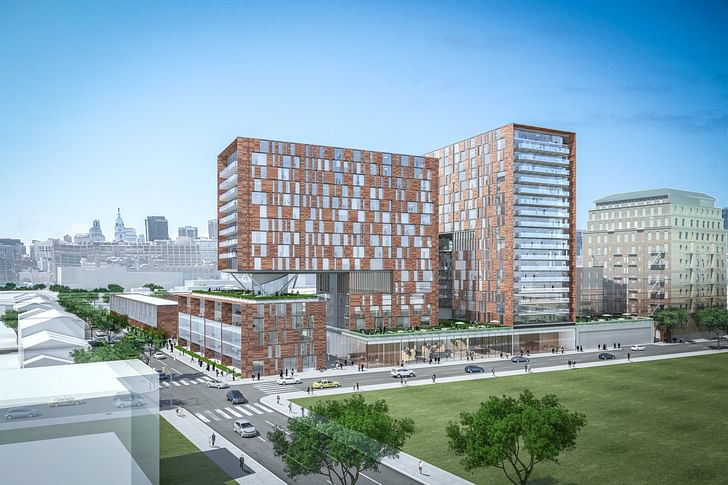
Following the family’s 2011 move into the apartment, whose maximum occupancy was 8 people, the PHA became aware in 2016 of the family’s growth to 9, and then to 14 members. In the fire’s aftermath, it emerged that the PHA had indeed placed the family on a waiting list for relocation, despite the agency’s initial statement that it had not sought to move them. These two contradictory statements were ironically reconciled when it emerged that the family was in wait for a unit the PHA knew did not exist. “Although they were flagged as needing a larger unit and technically on the waiting list,” a PHA spokesperson said, “PHA does not own homes of the size they required. So that’s tantamount to not being on the waiting list.” It should be noted that while the PHA claims the family never requested a transfer, this is disputed by friends of one of the victims, who claimed they were actively seeking to move.
It is much too simple, and it’s wrong, to blame a five-year-old, or blame a family that really doesn’t have any other options. — Philadelphia Fire Commissioner Adam Thiel
On the question of why the multigenerational family was not split into two or more smaller units within the PHA housing stock, the agency originally claimed they do not split families unless the family requests so. However, as noted by the Philadelphia Inquirer, the agency’s policy gives the PHA power to split families into multiple units to alleviate overcrowding. “[PHA] is making assumptions without taking any of their own steps,” housing advocate and attorney Jenna Collins told the Inquirer. “There isn’t any indication at this point that they ever asked the family if they were even willing to separate.”
For the city’s top firefighter, Commissioner Adam Thiel, the fatal fire at Fairmount was not the responsibility of a family but of a broken system. “It is much too simple, and it’s wrong, to blame a five-year-old, or blame a family that really doesn’t have any other options, for the fire problem in the United States,” Thiel said at a panel. “It’s much bigger than that.”
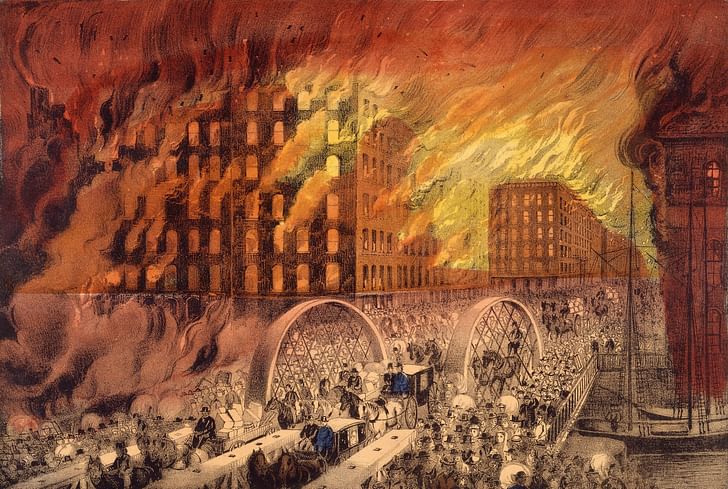
The fires in the Bronx and Philadelphia meanwhile provoked loud calls for changes to state building codes as well as action at a federal level for buildings that receive federal funding. Such clamors for reform are not unsurprising. Around the world, many national and regional fire codes have evolved steadily in advance to building tragedies. In 64AD, when the Great Fire of Rome destroyed 70% of the city, King Nero ordered height restrictions on houses and the banning of wood structures in favor of stone. After the Great Chicago Fire of 1871, the city also banned the use of wooden building materials in favor of non-flammable materials.
Regulations in the aftermath of the Great Fire of London in 1666 banned overhanging upper floors of houses while mandating the use of brick or stone construction, and improving easy access to water through the establishment of a fire hydrant system across the city. London’s fire regulations were further strengthened in the aftermath of the 2017 Grenfell Tower fire, which saw a ban on combustible materials in the external walls of residential buildings over 18 meters, and a strengthening of the requirement for sprinkler systems.

As with previous incidents, the Bronx and Philadelphia fires have flagged several shortcomings in local codes which may soon be the subject of reform. In Philadelphia, the city’s building code does not currently require existing buildings such as the Fairmount duplex to be fitted with fire extinguishers, sprinklers, or fire escapes. In addition, neither Philadelphia, New York nor even federal HUD regulations require the installation of hardwired smoke detectors which, unlike the battery-operated detectors in the Fairmount duplex, cannot be manipulated by residents and visitors. Meanwhile, following the Bronx fire, federal lawmakers unveiled a plan to enhance fire safety in federally-financed buildings, including a mandate for shutoff feathers on space heaters, a requirement for self-closing apartment doors, heat sensors, and heavier inspection requirements on landlords.
The two fires are symptomatic of a failure of building officials and owners to abide by existing regulations.
While these suggestions would undoubtedly improve fire safety standards, they do little to address a chronic issue at the heart of the Twin Parks and Fairmount fires. Whether it be the failure of the PHA to follow its overcrowding policy, or the failure for doors within the Twin Parks tower to close automatically as is required under New York City fire code, the two fires are symptomatic of a failure of building officials and owners to abide by existing regulations.
In this regard, the combined 29 victims of the Bronx and Philadelphia fires join the 61 people who have died in 42 fires in Chicago buildings over the past eight years where city officials were aware of fire safety problems. Of the 42 fires investigated by the Better Government Association and the Chicago Tribune, nine contained unaddressed fire safety issues previously reported to city officials, which were later noted as potential causes of the fires. These include fires started by stoves or space heaters in buildings that the city knew had no central heating, or faulty wiring and electrical issues unaddressed by the city for years. In 24 other fires, the city was warned about fire mitigation measures that were not properly provided, such as missing smoke detectors, that would have saved lives. In the other nine fires, city officials did not ensure people stayed away from vacant buildings that the city itself had deemed dangerous to occupy.
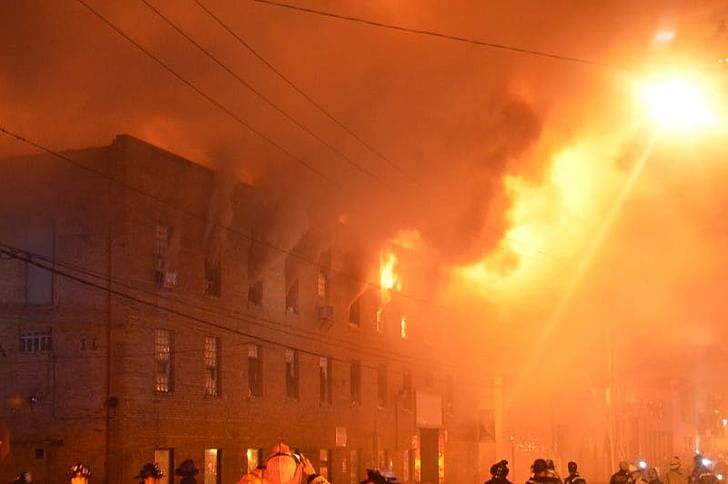
In response to the investigation, city officials pointed to the building department’s “outdated” record-keeping system, which they claimed underestimates the measures they took to investigate the tenant reports. While agreeing that the fires were tragic, they also echoed the inclination of officials in Philadelphia and the Bronx and deferred portions of blame back to landlord and tenant actions, as well as abuse of their complaints system by tenants. While the city also claimed that tenants were sometimes unavailable to allow city officials entry to investigate complaints, this is disputed by the BGA/Tribune investigation who found no evidence of this in city records.
Cities across the United States continue to witness these recurring themes of building fires caused by failures to adhere to existing regulations and unsatisfactory explanations from city officials responsible for enforcing them. While any upgrades to regulations, standards, or requirements designed to improve building safety are to be welcomed, such actions alone are arguably irrelevant in a reality where existing regulations are not being enforced.
These incidents must force us to ask more elemental questions of how we procure, fund, design, build, and maintain our built environment.
This lack of enforcement may have several probable roots, including indifference, corruption, and negligence. However, January’s fire at Fairmount, Philadelphia also revealed a public housing system collapsing under the weight of chronic underfunding. Decades of federal cuts to public housing programs have seen Philadelphia lose one-third of its public housing stock since the mid-1990s, currently sitting at 14,000 units. According to The New York Times, the PHA is currently only meeting 12% of its demand for public housing, while the waiting list for public housing has been mostly closed since 2013, currently sitting at 40,000 households. In addition to demands for new properties, the PHA estimates that its existing properties are in need of renovations and repairs to the tune of $1 billion.
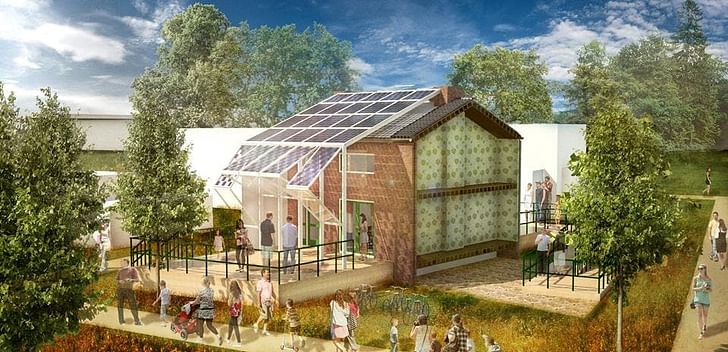
Against the backdrop of these figures, the discussion surrounding fatal fires in the Bronx, Philadelphia, Chicago, and elsewhere cannot be confined strictly to upgrading fire codes, as they too often are. Instead, they must force us to ask more elemental questions of how we procure, fund, design, build, and maintain our built environment. How can we design new public and affordable housing which balances efficiency with durability? How can we retrofit existing derelict or inadequate buildings into quality homes without sacrificing building safety? How can we shape communities which respond to expanding and contracting family sizes over time?
How can we, as an industry, pressure and lobby governments to provide the necessary funding, oversight, and transparency needed to afford each person in the United States their universally-declared human right to adequate housing?
Niall Patrick Walsh is an architect and journalist, living in Belfast, Ireland. He writes feature articles for Archinect and leads the Archinect In-Depth series. He is also a licensed architect in the UK and Ireland, having previously worked at BDP, one of the largest design + ...
13 Comments
Slash regulations and let the free market build houses. We've stunted affordable housing on all fronts - only luxury is profitable. Governments are naturally horrible at most things they do.
The free market will build luxury storage for art and crypto mining server racks. What incentive does the free market have to build housing that provides a small profit margin when they can continue building vehicles for wealth concealment masquerading as "investments?"
Or do you mean we should let the free market sell low cost, low quality housing with bubble mortgages so they can bundle and trade them as "investment opportunities" until the bubble bursts like THE FREE MARKET did in 2008?
Forgive me if I sound skeptical of your lauded free market. I happen to know it's ruled by greedy pigs who don't see you as anything but a rube, a walking wallet, a mark who believes the bullshit they shovel.
Libertarians >>> meaningless slogans.
We trample on human dignity and anthropomorphize a fucking financial system. Sick shit.
Good luck with your communism.
Ah, the author hangs blame on Trump and Giuliani while nary a mention is made of any of the Democratic mayors and city councilors who have mismanaged America's largest cities for generations. And I heartily agree with "Say No To Student Loans" when he avows that, "Governments are naturally horrible at most things they do." Governments don't do public housing well at all nor do they enforce the extent building codes covering huge multi-story rambling warehouses full of tenants, nor do our currently hard pressed fire departments who are pressed with a myriad of demands for medical and overdose calls always get the gear they need for major fires and often ask the tax payers to "fill the boot". In these same hard pressed Democrat controlled cities, the current overriding concerns for achieving woke ideals has come to roost, for example, in Oakland recently where the "Ghost Ship" burned up despite numerous city infractions, including a “housing habitability” charge of “illegal interior building structure”, two “blight” complaints, related to trash and “construction debris”, including claims that some garbage was “hazardous”and where the female fire chief immediately disappeared following extinguishment claiming a "family problem." Just perfect, and so sad, all of it.
Democrats have run cities into the ground for decades...now they are running the entire country into the ground. They are completely incompetent. Republicans are bad at some things, but democrats are bad at everything. I dont understand how such lazy, corrupt, useless cogs keep failing upwards into politics.
Your blind hatred of a political party is laughably myopic.
As we all know, cities are famously independently funded and housing regulations exist entirely on the municipal level. Federal policy surely couldn't affect such powerful city-level decision making.
Wow, the bots have now hacked archinect. Why does housing need to be spoken about as a idea related to political party? Since when did speaking about housing as a common good (i.e. a means toward establishing a stable work force and engaged citizens) become a discussion completely dislodged from that of infrastructure. To this point, how is infrastructure (i.e. the basic physical and organizational structures and facilities needed for the operation of a society) related to or entangled with the idea of government and politics. and are all governmental agencies political....and are all politics governmental. It seems the discourse around what this all means is in need of a civics lesson. To that end, let's reframe this, if we presuppose that housing is an infrastructure for society, feeding industry with the housing of labor in much the same way that it infrastructure provides electricity or other fuel sources, provides for common paths of transportation, etc. how should housing be restructured to better align with government's management and regulation of these critical infrastructures?
Thank you for this article. In January of 2022, The Pines of Perinton, had a devastating fire that ripped through the complex. This particular complex was built in 1972 by Gwathmey Siegel Architects under the UDC and is a designated affordable housing complex nestled within one of the wealthiest suburbs in Rochester NY. The story you described in your article is almost identical to what’s happening here. The building has been neglected for years - has outdated and faulty wiring, doors that don’t physically close, mold, rampant issues with infestation, overcrowding of units. Despite our best efforts to create change, we are gaslit and dismissed. This is a nationwide systemic issue and needs to be addressed! I would love to connect further with you about this, if possible. Thanks!
Block this user
Are you sure you want to block this user and hide all related comments throughout the site?
Archinect
This is your first comment on Archinect. Your comment will be visible once approved.